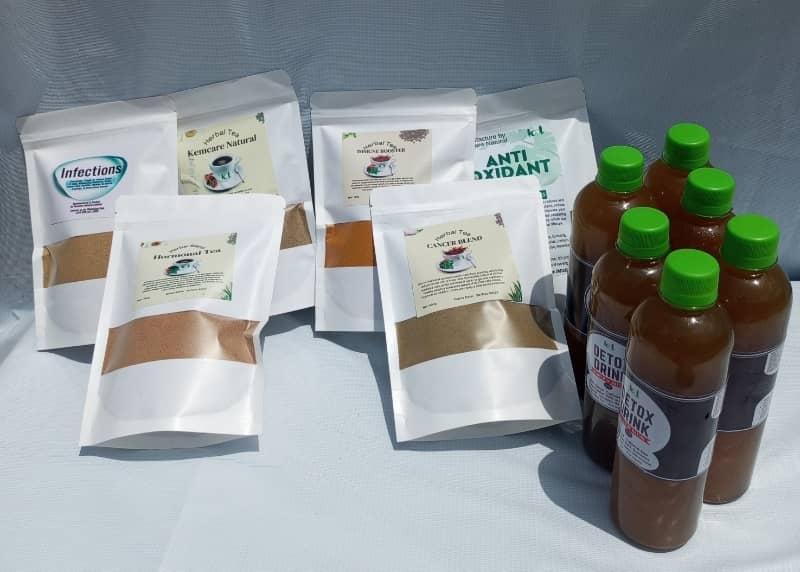Breast carcinoma
Commonly known as breast cancer, it is a type of cancer that originates in the breast tissue. It occurs when cells in the breast grow out of control, forming a tumour that can sometimes be felt as a lump. If left untreated, these cells can spread to other parts of the body, a process called metastasis.
Types of Breast Carcinoma
Breast cancer can start in different parts of the breast, and there are various types, each with its own characteristics and treatment approaches. The most common types include:
1. Ductal Carcinoma:
- Invasive Ductal Carcinoma (IDC): This is the most common type of breast cancer, accounting for about 80% of invasive cases. It starts in the milk ducts, breaks through the wall of the duct, and invades the fatty tissue of the breast. It can then spread to other parts of the body.
- Ductal Carcinoma In Situ (DCIS): This is a non-invasive or pre-invasive form of breast cancer. The abnormal cells are still confined to the milk ducts and have not spread into the surrounding breast tissue. While not immediately life-threatening, DCIS can become invasive if not treated.
2. Lobular Carcinoma:
- Invasive Lobular Carcinoma (ILC): This type starts in the lobules (milk-producing glands) and then spreads to the surrounding tissues or other parts of the body. It accounts for about 10% of invasive breast cancers.
- Lobular Carcinoma In Situ (LCIS): This is considered a non-cancerous breast condition, but it indicates an increased risk of developing invasive breast cancer in either breast later on.
Less Common Types:
- Inflammatory Breast Cancer (IBC): A rare and aggressive type where cancer cells block lymph vessels in the skin, causing the breast to look inflamed, red, and swollen, often without a distinct lump.
- Paget’s Disease of the Breast: A rare cancer that starts in the breast ducts and spreads to the skin of the nipple and areola.
- Inflammatory Breast Cancer: A rare cancer that begins in the cells lining blood vessels or lymph vessels in the breast.
- Phyllodes Tumours: Rare tumours that develop in the connective tissue of the breast. Most are benign, but some can be malignant.
Subtypes based on Molecular Characteristics: Beyond the location, breast cancers are also classified based on the presence or absence of certain receptors on the cancer cells:
- Hormone Receptor-Positive (ER+/PR+): These cancers have receptors for estrogen (ER) and/or progesterone (PR) and use these hormones to grow. They often respond to hormone therapy.
- HER2-Positive: These cancers have too much of the HER2 protein, which promotes cell growth. They tend to be more aggressive but can be treated with targeted therapies that block HER2.
- Triple-Negative Breast Cancer (TNBC): These cancers do not have estrogen, progesterone, or HER2 receptors. They are often more aggressive and do not respond to hormone therapy or HER2-targeted therapy, making chemotherapy and immunotherapy the primary treatments.
Causes and Risk Factors
The exact cause of breast cancer is not fully understood, but it’s believed to be a combination of genetic, lifestyle, and environmental factors. Risk factors include:
Factors You Cannot Change:
- Gender: Being a woman is the primary risk factor. Men can get breast cancer, but it’s rare.
- Age: The risk increases with age, with most breast cancers diagnosed in women over 50.
- Genetics: Inherited mutations in genes like BRCA1 and BRCA2 significantly increase the risk of breast and ovarian cancer.
- Family History: Having a close relative (mother, sister, daughter) with breast cancer, especially at a young age, increases risk.
- Reproductive History: Starting menstruation early (before age 12) or menopause late (after age 55) prolongs exposure to hormones, raising risk.
- Dense Breasts: Women with dense breasts have more connective and glandular tissue than fatty tissue, which can make mammograms harder to read and also increases risk.
- Personal History of Breast Cancer: Having had breast cancer in one breast increases the risk of developing it in the other breast or a new cancer in the same breast.
- Previous Radiation Therapy: Radiation therapy to the chest before age 30 can increase breast cancer risk later in life.
Factors You Can Change (Lifestyle-Related):
- Obesity/Overweight: Being overweight or obese, especially after menopause, increases breast cancer risk.
- Physical Inactivity: Lack of regular physical activity is associated with a higher risk.
- Alcohol Consumption: Alcohol intake is linked to an increased risk; the more alcohol consumed, the higher the risk.
- Hormone Therapy: Combination hormone replacement therapy (estrogen and progestin) used after menopause can increase risk, especially with long-term use. Estrogen-only therapy may also carry some risk.
- Reproductive Choices: Never having a full-term pregnancy or having a first pregnancy after age 30 can slightly increase the risk. Not breastfeeding may also be a factor.
- Smoking: Some research suggests a link between long-term smoking and increased breast cancer risk.
- Diet: While no specific diet can prevent breast cancer, a diet high in fruits, vegetables, and whole grains, and low in processed foods and red meat, may be beneficial.
Symptoms
Breast cancer symptoms can vary, and some people may not have any symptoms, especially in the early stages. Common signs and symptoms include:
- A new lump or mass in the breast or underarm (armpit), even if it’s small and painless. While most lumps are benign, any new lump should be checked.
- Thickening or swelling of part of the breast.
- Changes in the size or shape of the breast.
- Skin changes on the breast or nipple, such as dimpling (like an orange peel), puckering, redness, scaling, or flaking.
- Nipple changes, such as a nipple turning inward (inverted nipple), discharge (other than breast milk, especially if bloody or clear), or pain in the nipple area.
- Pain in any area of the breast that doesn’t go away.
It’s important to note that many of these symptoms can also be caused by non-cancerous conditions. However, any new or persistent breast changes should be evaluated by a healthcare professional.
Diagnosis
Diagnosis typically involves a combination of methods:
- Physical Examination: A doctor will examine the breasts and lymph nodes in the armpit and above the collarbone.
- Mammogram: An X-ray of the breast, often used for screening and to investigate suspicious areas.
- Breast Ultrasound: Uses sound waves to create images of breast tissue, helpful for distinguishing between solid lumps and fluid-filled cysts.
- Breast MRI (Magnetic Resonance Imaging): Provides detailed images of the breast, often used for women with dense breasts or a high risk of breast cancer.
- Biopsy: This is the definitive diagnostic test. A small sample of breast tissue is removed (using a needle or surgical procedure) and examined by a pathologist under a microscope to confirm the presence of cancer cells and determine their type and characteristics (e.g., hormone receptor status, HER2 status).
- Staging Tests: If cancer is confirmed, further tests like CT scans, bone scans, and PET scans may be performed to determine if the cancer has spread (metastasis) and to what extent. This helps in the stages of cancer, which guides treatment decisions.
Treatment
Breast cancer treatment is highly individualized and depends on the type, stage, hormone receptor status, HER2 status, and the patient’s overall health and preferences. Common treatment approaches include:
-
Surgery:
- Lumpectomy (Breast-Conserving Surgery): Removes only the tumour and a small amount of surrounding healthy tissue. Often followed by radiation therapy.
- Mastectomy: Removes the entire breast. Different types include simple (total) mastectomy (removes breast tissue, nipple, areola, and skin) and modified radical mastectomy (removes the entire breast and most underarm lymph nodes).
- Lymph Node Removal: Sentinel lymph node biopsy (removes only the first few lymph nodes to which the tumour drains) or axillary lymph node dissection (removes a larger number of underarm lymph nodes) to check for cancer spread.
-
Radiation Therapy: Uses high-energy rays to kill cancer cells, often used after lumpectomy to reduce the risk of recurrence, or after mastectomy in some cases.
-
Chemotherapy: Uses drugs to kill cancer cells throughout the body. It may be given before surgery (neoadjuvant) to shrink the tumour, or after surgery (adjuvant) to destroy any remaining cancer cells.
-
Hormone Therapy (Endocrine Therapy): Used for hormone receptor-positive breast cancers. These drugs block the effects of hormones or reduce hormone levels in the body to prevent cancer growth.
-
Targeted Therapy: Drugs that target specific weaknesses in cancer cells, such as HER2-targeted therapies for HER2-positive breast cancer.
-
Immunotherapy: Helps the body’s immune system recognize and fight cancer cells. It’s a newer treatment option for certain types of breast cancer, particularly triple-negative breast cancer.
-
Palliative Care: Focuses on improving the quality of life for patients with advanced or metastatic breast cancer by managing symptoms and side effects of treatment.
Prognosis
The prognosis (outlook) for breast cancer varies greatly depending on several factors, including:
- Stage of Cancer at Diagnosis: Early-stage breast cancer generally has a much better prognosis than advanced or metastatic cancer.
- Type of Breast Cancer: Some types, like triple-negative breast cancer, can be more aggressive.
- Grade of Cancer: How abnormal the cancer cells look under a microscope (higher grade indicates more aggressive growth).
- Hormone Receptor and HER2 Status: These factors determine which targeted therapies are effective and can influence prognosis.
- Lymph Node Involvement: Whether cancer has spread to the lymph nodes.
- Patient’s Age and Overall Health: Younger patients and those with better overall health may tolerate more aggressive treatments.
Survival rates are often reported as 5-year relative survival rates, meaning the percentage of people with a specific cancer and stage who are alive 5 years after diagnosis compared to people without that cancer. For localized breast cancer (no sign of spread outside the breast), the 5-year relative survival rate is excellent, often over 99%. However, these are averages, and individual outcomes can vary.
Prevention
While not all breast cancers are preventable, several lifestyle modifications can help reduce the risk, especially for individuals not at high genetic risk:
- Maintain a Healthy Weight: Obesity, particularly after menopause, increases breast cancer risk.
- Be Physically Active: Regular exercise can lower the risk. Aim for at least 150 minutes of moderate aerobic activity or 75 minutes of vigorous activity per week.
- Limit Alcohol Consumption: The less alcohol consumed, the lower the risk.
- Breastfeed, if Possible: Breastfeeding for a longer duration is associated with a reduced risk.
- Limit Postmenopausal Hormone Therapy: Discuss the risks and benefits with your doctor and consider non-hormonal alternatives for menopausal symptoms.
- Avoid Smoking: Smoking is linked to an increased risk of several cancers, including breast cancer.
- Eat a Healthy Diet: Focus on a diet rich in fruits, vegetables, and whole grains, and limit processed foods and red meat.
- Regular Screening: For early detection, follow recommended breast cancer screening guidelines, which typically include regular mammograms starting at age 40 or 50, depending on individual risk factors and guidelines.
- Risk-Reducing Medications/Surgery: For individuals at very high risk (e.g., strong family history, BRCA mutations), doctors may discuss risk-reducing medications (like tamoxifen or raloxifene) or preventive surgeries (like prophylactic mastectomy).
Individuals must be aware of their breast health, perform regular self-checks (though not recommended for screening alone), and consult a healthcare professional for any concerns or to discuss personalized screening and prevention strategies.






Reviews
There are no reviews yet.